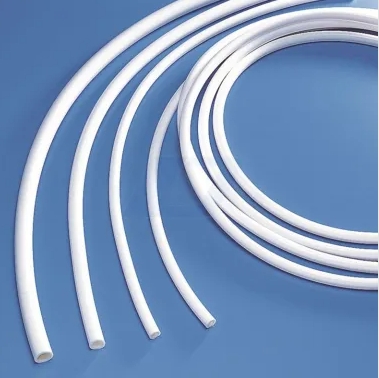What is a PTFE extruded tube?
In the realm of modern engineering, where precision and performance stand as the cornerstone of innovation, materials with exceptional properties hold a pivotal role. Among these remarkable materials is PTFE, short for polytetrafluoroethylene, a synthetic fluoropolymer that has transformed industries with its unparalleled attributes. At the heart of PTFE's versatility lies its application in the form of extruded tubes, providing a conduit for countless technological advancements. This article delves into the world of PTFE extruded tubes, unraveling the intricacies of their composition, manufacturing process, and diverse applications.
Understanding PTFE: The Marvel of Fluoropolymers
Before diving into the specifics of PTFE extruded tubes, let's first explore the exceptional qualities of PTFE itself. Discovered in the 1930s by Roy Plunkett, PTFE boasts a range of extraordinary characteristics that make it a material of choice across various industries. It is known for its exceptional chemical resistance, making it virtually impervious to most corrosive substances. This property, coupled with its low friction coefficient, grants PTFE a unique advantage in applications where friction and wear must be minimized, such as bearings and seals.
Moreover, PTFE exhibits remarkable electrical insulation properties, making it a vital component in industries that require non-conductive materials, including the electronics and telecommunications sectors. Its resistance to extreme temperatures, both high and low, further widens its scope of application. With a melting point of around 327°C (621°F) and an operating range from -200°C (-328°F) to 260°C (500°F), PTFE remains stable even in harsh environmental conditions.
The Birth of PTFE Extruded Tubes
PTFE's ability to be processed into various forms has opened doors to innovation. Among these forms, extruded tubes play a pivotal role. PTFE extruded tubes are created through a process known as extrusion, a manufacturing method that involves pushing a material through a die to create a specific shape. In the case of PTFE, the extrusion process yields seamless and continuous tubes with consistent dimensions.
The process begins with PTFE resin in granular form, which is then fed into an extruder. The extruder applies heat to melt the resin, transforming it into a viscous state. As the molten PTFE flows through the extrusion die, it takes on the desired shape – that of a tube. The extruded tube is then cooled and solidified, resulting in a product with uniform properties.
Advantages of PTFE Extruded Tubes
The utilization of PTFE extruded tubes offers an array of advantages that cater to various industries and applications. Their high chemical resistance ensures that they remain unaffected by a wide range of corrosive substances, making them ideal for transporting chemicals and fluids. This property finds applications in the chemical processing, pharmaceutical, and food industries.
Additionally, PTFE extruded tubes' resistance to extreme temperatures and non-reactive nature make them indispensable in applications involving both cryogenic and high-temperature processes. In the realm of electrical engineering, their excellent insulating properties prove invaluable, enabling the creation of durable and reliable insulation components.
The low friction coefficient of PTFE contributes to its effectiveness in applications that require smooth and efficient flow, such as in hydraulic systems and fluid handling equipment. This property reduces energy loss due to friction, leading to improved overall efficiency.
Versatile Applications of PTFE Extruded Tubes
The versatility of PTFE extruded tubes is reflected in the myriad of applications across diverse industries. In the automotive sector, these tubes find use in fuel lines, brake systems, and hydraulic hoses due to their resistance to both fuel and high temperatures. In the medical field, PTFE tubes are employed in catheters, where their biocompatibility and resistance to bodily fluids are crucial.
Aerospace and aviation industries benefit from PTFE extruded tubes' ability to withstand extreme temperature fluctuations and resist chemicals found in aviation fuels. Their electrical insulation properties make them a staple in wiring and cable applications.
Conclusion
In the intricate tapestry of modern engineering, PTFE extruded tubes stand as a testament to the remarkable capabilities of fluoropolymers. Through a meticulous extrusion process, these tubes offer unparalleled chemical resistance, temperature stability, electrical insulation, and low friction coefficient. As a result, they find applications in industries ranging from chemical processing to electronics, from automotive to aerospace.
The fusion of PTFE's inherent properties with the manufacturing precision of extrusion has led to a material that paves the way for technological progress. As industries continue to push boundaries, PTFE extruded tubes will undoubtedly remain at the forefront of innovation, serving as conduits for a multitude of groundbreaking advancements.




